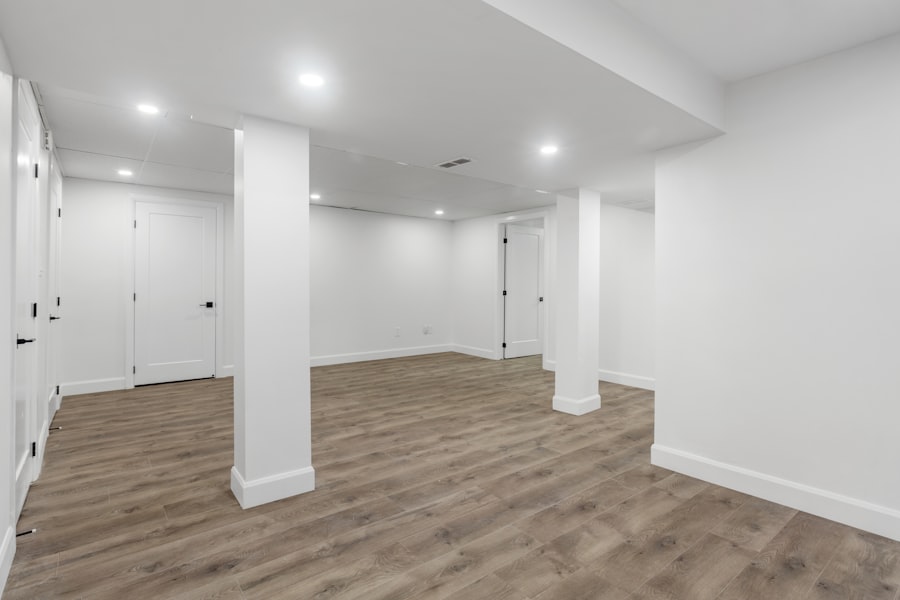Basement flooding is a common issue that many homeowners face, often leading to significant damage and costly repairs. Understanding the underlying causes of this problem is crucial for effective prevention and management. One of the primary reasons for basement flooding is heavy rainfall, which can overwhelm drainage systems and lead to water pooling around the foundation.
When the ground becomes saturated, it can no longer absorb additional water, causing it to seep into the basement through cracks or porous materials. Additionally, melting snow in the spring can exacerbate this issue, especially in regions that experience significant temperature fluctuations. Another contributing factor to basement flooding is poor drainage around the home.
If gutters and downspouts are not functioning properly, rainwater can overflow and accumulate near the foundation. This situation is often worsened by landscaping features that direct water toward the house rather than away from it. Furthermore, plumbing issues, such as broken pipes or sewer backups, can also lead to unexpected flooding in basements.
By identifying these causes, homeowners can take proactive measures to mitigate the risk of flooding and protect their property from water damage.
Key Takeaways
- Basement flooding can be caused by various factors such as poor yard grading, clogged gutters, and cracks in the walls and floors.
- Regular inspection and maintenance of gutters and downspouts is crucial in preventing basement flooding.
- Installing a sump pump and backup system can help remove excess water from the basement and prevent flooding.
- Sealing cracks and gaps in the basement walls and floors is essential to prevent water from seeping in.
- Improving yard grading to direct water away from the foundation can significantly reduce the risk of basement flooding.
Inspecting and Maintaining Gutters and Downspouts
Why Cleaning Gutters is Important
Clogged gutters can lead to water overflow, which may pool around the foundation and eventually seep into the basement. Homeowners should make it a habit to clean their gutters at least twice a year, particularly in the fall when leaves and debris are more likely to accumulate.
Inspecting Gutters and Downspouts
In addition to cleaning, it is important to check for any signs of damage or wear in the gutters and downspouts. Cracks, rust, or loose fittings can compromise their effectiveness, allowing water to escape where it shouldn’t.
Maintaining a Functional Drainage System
Homeowners should also ensure that downspouts extend at least five to ten feet away from the foundation to prevent water from pooling near the base of the house. By taking these steps, individuals can maintain a functional drainage system that helps protect their basements from flooding.
Installing a Sump Pump and Backup System

For homeowners living in areas prone to heavy rainfall or flooding, installing a sump pump can be a wise investment. A sump pump is designed to remove excess water that accumulates in a basement or crawl space, effectively preventing flooding. When water levels rise, the pump activates and directs the water away from the home, keeping the basement dry.
It is essential for homeowners to choose a reliable sump pump that suits their specific needs, considering factors such as the size of the basement and the average rainfall in their area. In addition to a primary sump pump, having a backup system is crucial for ensuring continued protection during power outages or pump failures. Battery-operated backup pumps can provide peace of mind, as they will activate even when the main power supply is disrupted.
Homeowners should regularly test both their primary and backup systems to ensure they are functioning correctly. By investing in a sump pump and backup system, individuals can significantly reduce the risk of basement flooding and protect their property from potential water damage.
Sealing Cracks and Gaps in the Basement Walls and Floors
| Types of Cracks | Severity | Recommended Action |
|---|---|---|
| Vertical Cracks | Minor | Epoxy injection |
| Horizontal Cracks | Moderate | Carbon fiber strips |
| Diagonal Cracks | Severe | Professional assessment and repair |
Sealing cracks and gaps in basement walls and floors is another critical step in preventing water intrusion. Over time, concrete can develop small fissures due to settling or temperature changes, creating pathways for moisture to enter. Homeowners should conduct a thorough inspection of their basement walls and floors, looking for any visible cracks or gaps that may allow water to seep through.
Using a high-quality sealant specifically designed for concrete can effectively close these openings and create a barrier against moisture. In addition to sealing visible cracks, it is also important to address any potential vulnerabilities in construction joints or around pipes that penetrate the walls. These areas are often overlooked but can be significant sources of water intrusion if not properly sealed.
By taking the time to seal all potential entry points, homeowners can create a more watertight environment in their basements, reducing the likelihood of flooding during heavy rains or snowmelt.
Improving Yard Grading to Direct Water Away from the Foundation
Proper yard grading plays a vital role in managing water runoff and preventing basement flooding. The ground surrounding a home should slope away from the foundation to ensure that rainwater drains away rather than pooling near the base of the house. Homeowners should assess their yard’s grading and make necessary adjustments if they notice any low spots or areas where water tends to collect after rainfall.
In some cases, it may be necessary to regrade the yard by adding soil or creating swales—shallow ditches designed to direct water flow. Planting grass or other vegetation can also help absorb excess moisture while stabilizing the soil. By improving yard grading, homeowners can significantly reduce the risk of water accumulation around their foundations, thereby protecting their basements from potential flooding.
Using Waterproofing Paint and Membranes

Applying waterproofing paint or membranes is an effective way to enhance a basement’s resistance to moisture intrusion. These products create a protective barrier on walls and floors, preventing water from penetrating through porous surfaces. Homeowners should choose high-quality waterproofing materials specifically designed for use in basements, as these products are formulated to withstand hydrostatic pressure and other challenges associated with moisture.
Before applying waterproofing paint or membranes, it is essential to prepare the surface properly by cleaning it thoroughly and repairing any existing cracks or damage. Once applied, these coatings can provide an additional layer of protection against moisture, helping to keep basements dry even during heavy rainfall or flooding events. Regular maintenance and reapplication may be necessary over time to ensure continued effectiveness.
Maintaining Proper Drainage Around the Foundation
Maintaining proper drainage around the foundation is crucial for preventing basement flooding. This involves ensuring that all drainage systems—such as French drains, surface drains, and downspouts—are functioning correctly and free from obstructions. Homeowners should regularly inspect these systems for clogs or damage that could impede water flow.
In addition to maintaining existing drainage systems, homeowners may also consider installing additional drainage solutions if they notice persistent issues with water accumulation around their foundations. This could include adding French drains or installing catch basins to collect excess water before it reaches the foundation. By prioritizing proper drainage maintenance and implementing effective solutions, individuals can significantly reduce their risk of basement flooding.
Considering Professional Waterproofing Solutions
For homeowners who have tried various preventive measures without success, considering professional waterproofing solutions may be necessary. Professional contractors specialize in identifying vulnerabilities in basements and implementing effective strategies to mitigate water intrusion. They can conduct thorough inspections, assess drainage systems, and recommend tailored solutions based on individual needs.
Professional waterproofing services may include installing advanced drainage systems, applying specialized waterproofing membranes, or even excavating around the foundation to address underlying issues. While this option may require a financial investment, it can provide long-term protection against basement flooding and save homeowners from costly repairs down the line. Ultimately, seeking professional assistance can offer peace of mind and ensure that basements remain dry and safe for years to come.
If you’re dealing with basement flooding or seepage issues, you may want to consider checking out this article on DIY outdoor fire pit projects. Creating a fire pit in your backyard can help divert water away from your home’s foundation and prevent future flooding. It’s a fun and practical weekend project that can transform your outdoor space while also addressing water drainage concerns.
FAQs
What causes basement flooding or seepage?
Basement flooding or seepage can be caused by a variety of factors, including heavy rainfall, poor drainage around the foundation, cracks in the foundation walls, malfunctioning sump pumps, and sewer backups.
How can I prevent basement flooding or seepage?
To prevent basement flooding or seepage, it’s important to ensure proper grading around the foundation, maintain gutters and downspouts, seal any cracks in the foundation walls, install a sump pump with a battery backup, and consider installing a French drain or exterior waterproofing.
What should I do if my basement floods?
If your basement floods, it’s important to prioritize safety and turn off the electricity to the affected area. Then, remove any standing water as quickly as possible to prevent further damage. It’s also important to address the cause of the flooding to prevent future incidents.
Can I prevent basement flooding with landscaping?
Yes, proper landscaping can help prevent basement flooding. Ensuring proper grading around the foundation, installing French drains, and maintaining gutters and downspouts can all help to direct water away from the foundation and prevent seepage into the basement.
When should I seek professional help for basement flooding or seepage?
If you are unable to determine the cause of the basement flooding or seepage, or if the issue is recurring despite your efforts to prevent it, it’s important to seek professional help. A qualified contractor or waterproofing specialist can assess the situation and recommend the best course of action to prevent future issues.






